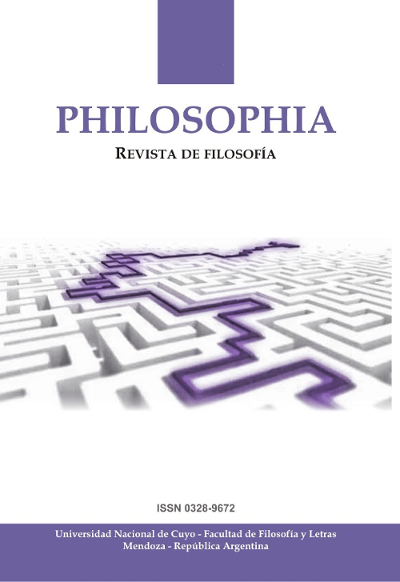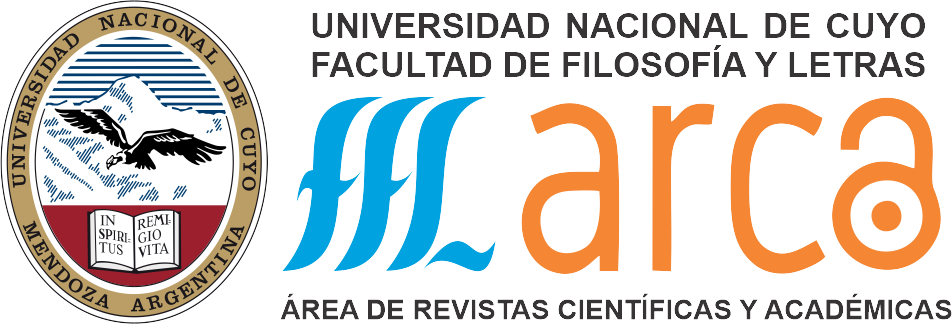Transparencia, apertura y conciencia: el esclarecimiento de sí mismo en Sein und Zeit
DOI:
https://doi.org/10.48162/rev.50.006Palabras clave:
Autoesclarecimiento, Conciencia, Transparencia, VerdadResumen
El siguiente trabajo tiene como propósito examinar la noción de «transparencia» (Durchsichtigkeit) en cuanto definición expresa de aquello en lo que consiste, para Heidegger, el autoconocimiento del Dasein. Por tanto, será preciso también inspeccionar el concepto de autoengaño aparejado a este en cuanto que es opuesto suyo. Para ese fin, confrontaré los pasajes donde se trata esta cuestión, en el § 31 de Sein und Zeit, con aquellos otros (§§ 54-60) destinados por el autor a la elucidación de la estructura de la conciencia sobre la base de una interpretación existencial de la misma que ponga de relieve las condiciones ontológicas de su posibilidad. Mi hipótesis es que esa transparencia de la que habla Heidegger debe entenderse a partir de los lineamientos establecidos en la explicación de la apertura propia del Gewissen y la modificación existentiva que acarrea, con lo cual queda atestiguado el poder-ser sí mismo frente al uno y, entonces, el esclarecimiento del Selbst.
Citas
Burnet, John. Platonis opera, vols. 2 y 3. Great Britain: Oxford University Press, 1903.
Courtine, Jean-François. “Voice of Conscience and Call of Being.” Topoi 7 (1988): 101–109.
Crowell, Steven. “Subjectivity: Locating the First-Person in Being and Time.” Inquiry: An Interdisciplinary Journal of Philosophy 44/4 (2001): 433-454.
Denyer, Nicholas. Plato. Alcibiades. Cambridge: Cambridge University Press, 2001.
Heidegger, Martin. Logik. Die Frage nach der Wahrheit. Frankfurt am Main: Vittorio Klostermann, 1976.
Heidegger, Martin. Ontologie. Die Hermeneutik der Faktizität. Frankfurt am Main: Vitto-rio Klostermann, 1988.
Heidegger, Martin. Sein und Zeit. Tübingen: Max Niemeyer Verlag, 2006.
Jaeger, Werner, ed. Aristotelis Metaphysica. Great Britain: Oxford University Press, 1957.
Kant, Immanuel. Gesammelte Schriften. Abtheilung I: Werke. Bd. 6: Die Religion in-nerhalb der Grenzen der blossen Vernunft. Die Metaphysik der Sitten. Berlin: De Gruy-ter, 1969.
Käufer, Stephan. “Jaspers, Limit-Situations, and the Methodological Function of Authen-ticity.” En Heidegger, Authenticity and the Self. Themes From Division Two of Being and Time, editado por Denis McManus, 95–115. London; New York: Routledge, 2015.
Renaud, François y Tarrant, Harold. The platonic Alcibiades I. The Dialogue and its Re-ception. Cambridge: Cambridge University Press, 2015.
Rivera, Jorge Eduardo, trad. Martin Heidegger: Ser y tiempo. Santiago de Chile: Editorial Universitaria, 1997.
Rosales, Alberto. Unidad en la dispersión. Aproximaciones a la idea de filosofía. Mérida: Universidad de Los Andes, Publicaciones del Vicerrectorado Académico, Editorial Ve-nezolana, 2006.
Sandys, John, trad. The Odes of Pindar including the Principal Fragments with an Intro-duction and an English Translation. London: William Heinemann; New York: The MacMillan Co., 1937.
Scott, Charles. “Heidegger and Consciousness.” Southern Journal of Philosophy 8/4 (1970): 355–372.
Slings, S. R. Platonis Rempublicam. Great Britain: Oxford University Press, 2003.
Vigo, Alejandro. Conciencia, ética y derecho. Estudios sobre Kant, Fichte y Hegel. Hil-desheim; Zürich; New York: Georg Olms Verlag, 2020.
Vigo, Alejandro. “La atestiguación, en el modo de ser del Dasein, de un «poder-ser» pro-pio y el «estado de resuelto» (§§ 54-60).” En Ser y tiempo de Martin Heidegger. Un comentario fenomenológico, coordinado por Ramón Rodríguez, 269–301. Madrid: Tecnos, 2015.
Watts, William, trad. St. Augustine’s Confessions (Books 9–13), vol. 2. London: William Heinemann; New York: The MacMillan Co., 1912.
Publicado
Cómo citar
Número
Sección
Licencia
Derechos de autor 2021 Philosophia

Esta obra está bajo una licencia internacional Creative Commons Reconocimiento-NoComercial-CompartirIgual 3.0.
Se permite la reproducción de los artículos siempre y cuando se cite la fuente. Esta obra está bajo una Licencia Atribución-NoComercial-CompartirIgual 3.0 (CC BY-NC-SA 3.0).
Usted es libre de: Compartir "” copiar y redistribuir el material en cualquier medio o formato; adaptar "” remezclar, transformar y construir a partir del material.
La licenciante no puede revocar estas libertades en tanto usted siga los términos de la licencia
Bajo los siguientes términos:
Atribución "” Usted debe dar crédito de manera adecuada, brindar un enlace a la licencia, e indicar si se han realizado cambios. Puede hacerlo en cualquier forma razonable, pero no de forma tal que sugiera que usted o su uso tienen el apoyo de la licenciante.
NoComercial "” Usted no puede hacer uso del material con propósitos comerciales.
CompartirIgual "” Si remezcla, transforma o crea a partir del material, debe distribuir su contribución bajo la lamisma licencia del original.
No hay restricciones adicionales "” No puede aplicar términos legales ni medidas tecnológicas que restrinjan legalmente a otras a hacer cualquier uso permitido por la licencia.
Para mayor información, visite https://creativecommons.org/licenses/by-nc-sa/3.0/deed.es





















